Succulents have turned those without green thumbs into instant horticulturists because these plants have a charm offensive that can turn any space into a sublime, elegant, and vibrant destination point with its rich colors, delightfully plump leaves, and strangely endearing textures.
Go into any nursery or garden store and your eyes will easily be drawn into the mesmerizing spectrum of colors at the succulent plants’ section. Dark green, royal purple, bright orange, sunshine yellow, emerald green, plus mixtures of different hues – you can find succulent plants to fit your color mood, character, or preference.
The Best Types Of Colorful Succulents
In this article, we’ll share with you our recommended selection of colorful succulents that will surely brighten your indoor space or outdoor garden. We’ll also teach you how to take care of your lovely beauties to make sure they retain their colors for years to come.
Echeveria Subrigada
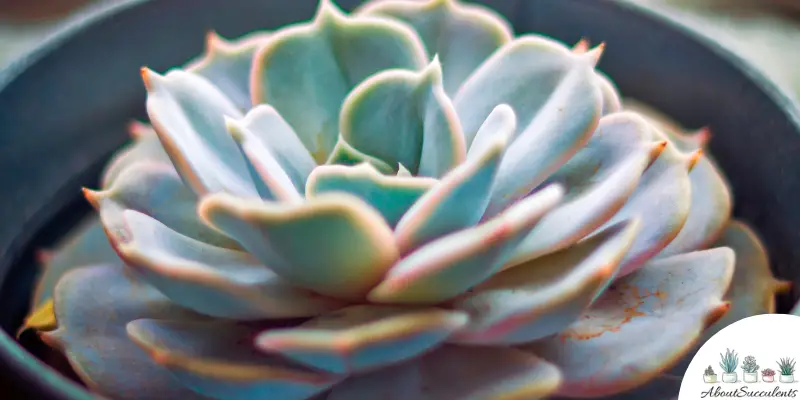
Echeveria subrigada is also known as “Fire and Ice” because of its cool lime green leaves that are accented by a fire-red colored outline. This unique contrast of cold and hot colors makes it a stunning addition to your home or garden. To bring out the intensity of the colors, make sure Fire and Ice gets a daily dose of direct sunlight for 4 to 6 hours.
Euphorbia Tirucallii
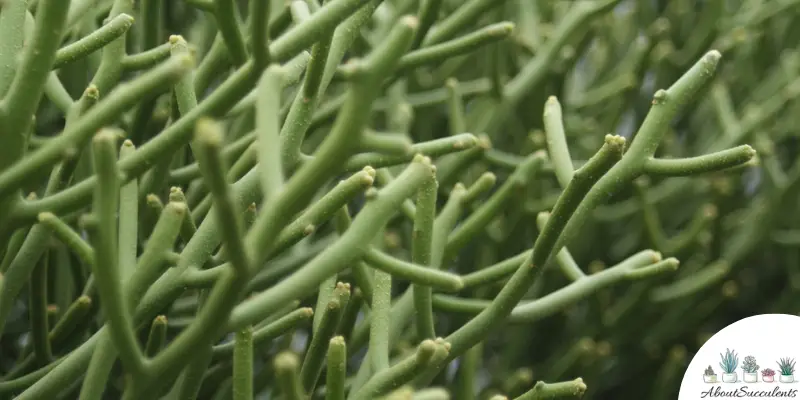
Euphorbia tirucallii might be sold as “Sticks on Fire” in the nursery or garden store. But you won’t have a hard time finding it because as its self-descriptive alias suggests, the succulent looks like pencils with flaming hot, fiery ends, especially during the cold, winter season. In the summertime, Sticks on Fire takes on a yellow color.
Kalanchoe Luciae
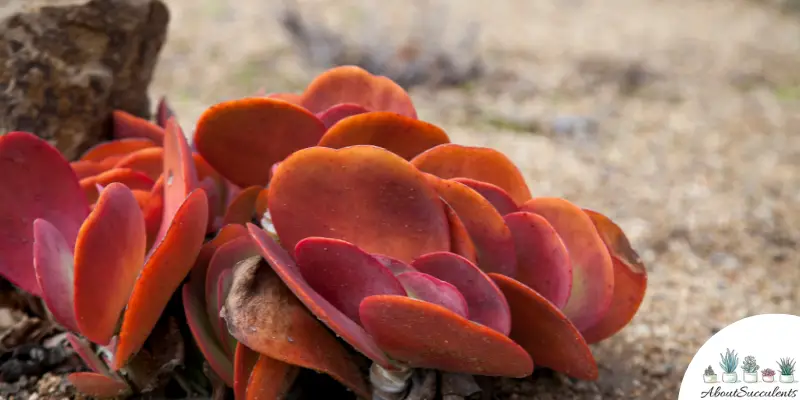
Kalanchoe luciae’s flat, plump, fleshy, and round leaves give it the nickname “Paddle Plant”. The bright green leaves that closely resemble clam shelves develop red wine-colored tips during the winter months. In the later months of the cold season, expect a 2ft to 3ft (60cm to 90cm) stem bearing a cluster of light yellow colored flowers to arise in the center.
Echeveria Agavoides
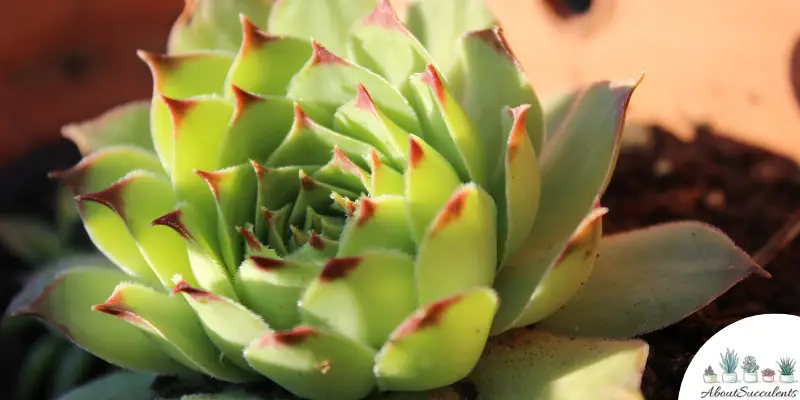
Echeveria agavoides are easily identified by their dark green leaves that have bright red tips accounting for its nickname “Lipstick”. However, you can find Echeveria agavoides available in a variety of colors such as bright green foliage with purplish tips, pinkish rosettes, and gray – almost ghost-like – colored leaves. If you give Lipstick full sunlight for 4 to 6 hours per day, you’ll be rewarded with lantern-shaped red flowers with yellow-colored tips in the spring or early summer.
Crassula Capitella Thyrsiflora
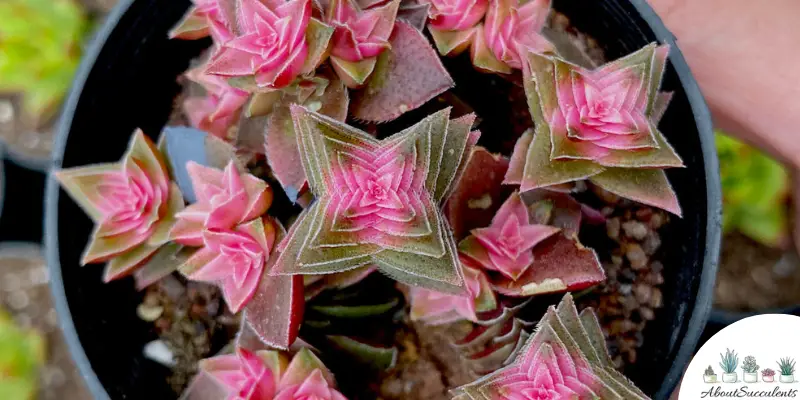
Crassula capitella thyrsiflora can be used as a prop on the set of a Star Trek movie as proof of alien life. The best way to describe its features is “appallingly appealing” with multiple pinkish-red rosettes that are stacked in the form of a pagoda and can grow outward to give the succulent an unusual silhouette. It goes by different names such as “Red Pagoda”, “Shark’s Tooth Crassula”, and “Pagoda Village”.
Haworthia Attenuata
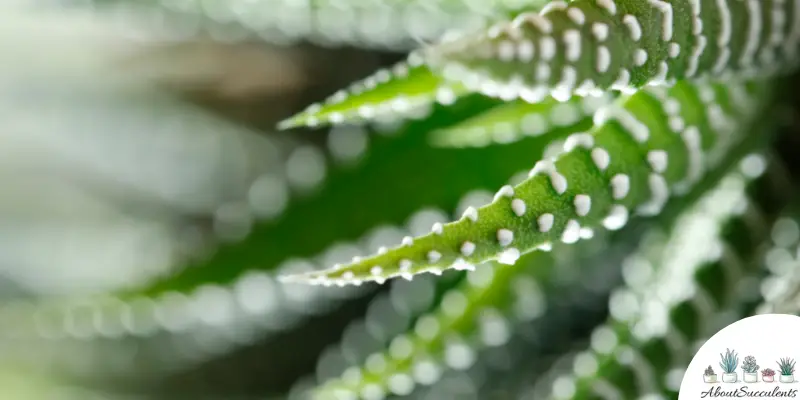
Haworthia attenuata is recognizable by its dark green leaves that feature a horizontal stripe formed by a series of white, rough-looking warts. Hence, the alias “Zebra Haworthia”. The name “Attenuata” means “to taper” and best describes the shape of the leaves that have the shape of an arrowhead. One of the most durable succulent plants you can grow, Zebra Haworthia only grows up to 4-inches (10.16cm).
Echeveria Afterglow
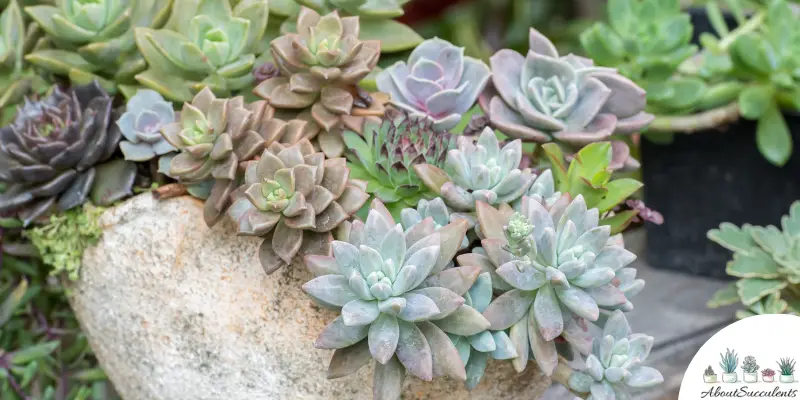
Echeveria Afterglow is one of the most popularly grown succulent plants because of its mesmerizing powdery lavender-pink leaves that are accented by bright-pink tips. Succulent hobbyists love this plant because the rosette is comparatively larger than other types of echeverias. Also, Echeveria afterglow achieves brighter, more pronounced colors than its counterparts when it’s given full sunlight for 4 to 6 hours in the morning.
Sedum Nussbaumerianum
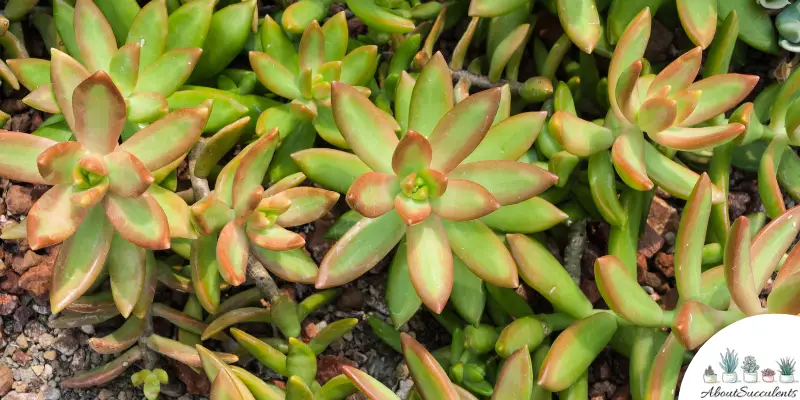
Sedum nussbaumerianum is an award-winning succulent that grows yellow-green leaves when given partial sunlight but changes color to bright reddish-copper or rosy gold once it’s been exposed regularly to the full rays of the sun. Properly cared for, “Coppertone Sedum” will produce round clusters of star-shaped white-colored flowers with pink tips in the spring.
Gymnocalycium Mihanovichii
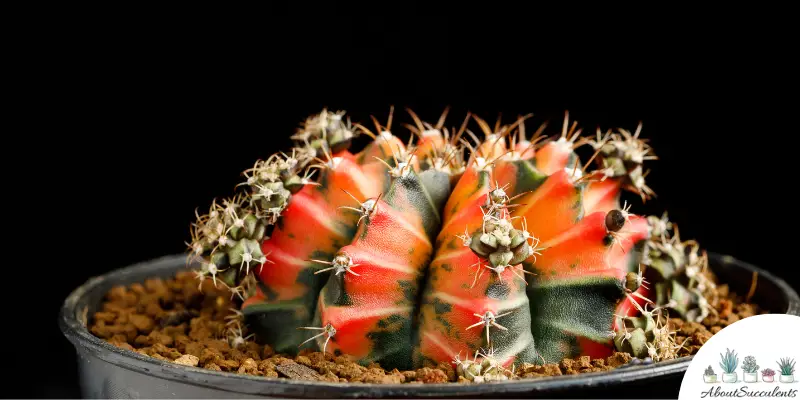
Gymnocalycium mihanovichii is also known as “Moon Cactus”, “Ruby Ball Cactus”, and “Red Cap” because of the red, spindly, ball-shaped piece of the Gymnocalycium that’s grafted on top of a variety of rootstock cactus, particularly the Hylocereus cactus. Because Moon Cactus doesn’t produce chlorophyll, you can find it in a variety of colors ranging from different hues of orange, red, and yellow.
Sempervivum Red Rubin
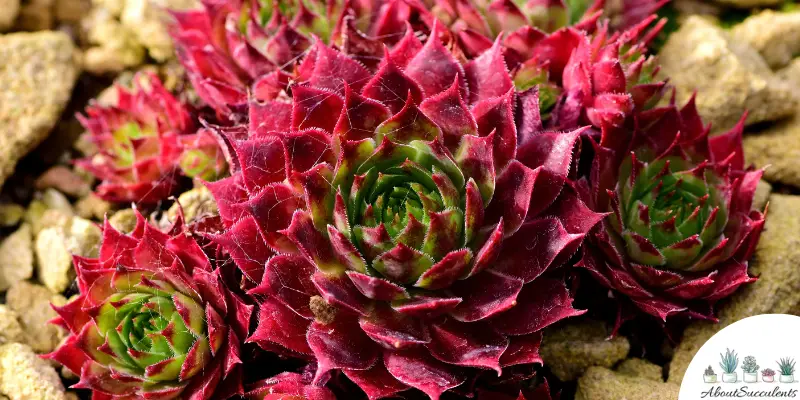
Sempervivum red rubin will be a succulent plant that will be recommended by many horticulturists because it changes color with the season. During cold weather, its thick, plump leaves turn from green to burgundy or wine red. In the summertime, you’ll welcome the appearance of a stalk that’s adorned by small, pink colored flowers.
Sedum Rubrotinctum
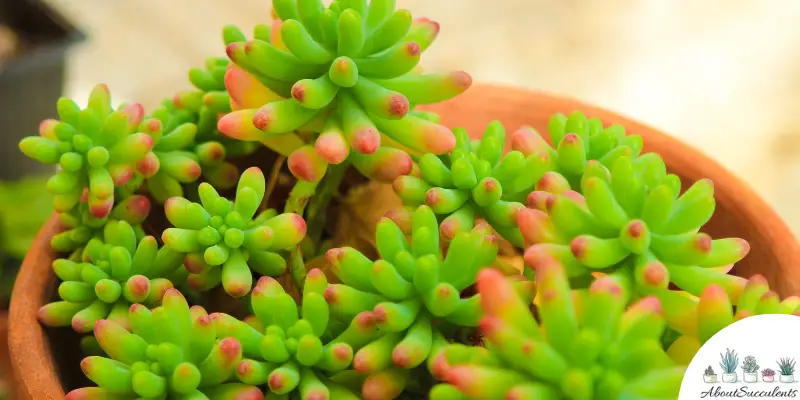
Sedum rubrotinctum’s nickname of “Jelly Bean Plant” is an accurate description of its appearance. Guests might think you’re growing jelly bean candies inside your home or outdoor garden. This charming, alluring succulent has thick, plump leaves with bright, glossy-red tips that give the plant its sugary-sweet, somewhat chewy texture. Make sure the Jelly Bean Plant is grown in an area that gets a lot of bright, morning sunlight every day to produce the attractive, radiant red-colored tips.
Echeveria Lola
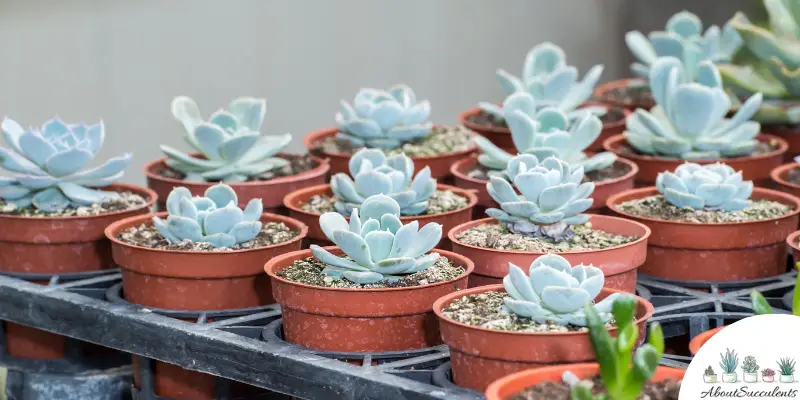
Echeveria Lola is the polar opposite of the succulent plants featured in this list. Instead of providing bright, vibrant colors that lend a certain level of loudness to an area, Echeveria lola’s beauty lies in the subdued, restrained, yet sublime combinations of pastel shades of blue, pink, green, and purple. The succulent offers a delicate type of allure and charm to your home or outdoor garden. Housed in a small, ceramic or terracotta pot, Echeveria lola will surely be a conversation piece for your guests.
How To Take Care Of Your Colorful Succulents
Succulents can become a dichotomy for many plant hobbyists. They are captivating, charming, and create excitement in your garden but succulents can also be boring because these durable plants require very little care and maintenance.
You only need to remember a few things to keep your succulent plants healthy and beautiful.
On top of the list is to avoid overwatering your plant. Overwatering is the leading cause of death of succulents. Giving the soil water while it’s still wet to the touch will immerse the roots in water and lead to root rot.
In the summertime, you can water the soil every 7 to 10 days but to be sure, insert a stick into the soil. If the end feels dry to the touch, then go ahead and water the soil.
Plant your succulent in an area that receives partial to full sun for 4 to 6 hours every day. As you’ve read, some of the succulent plants in this article grow better when given full sun exposure. Never place the succulent under the heat of the afternoon sun. Otherwise, its leaves will burn.
Lastly, use sandy soil to grow your succulents. Add other ingredients such as lava rock, pumice, and pebbles to improve the quality of drainage and allow the soil to dry out faster.
Last Updated on June 28, 2022 by Sofia Lara